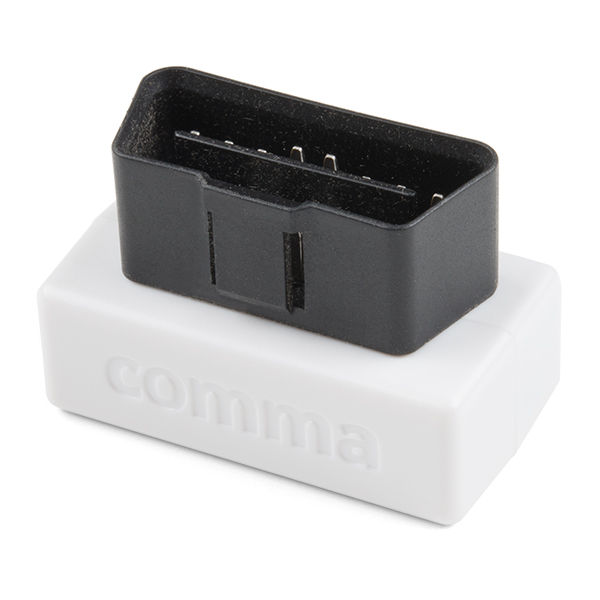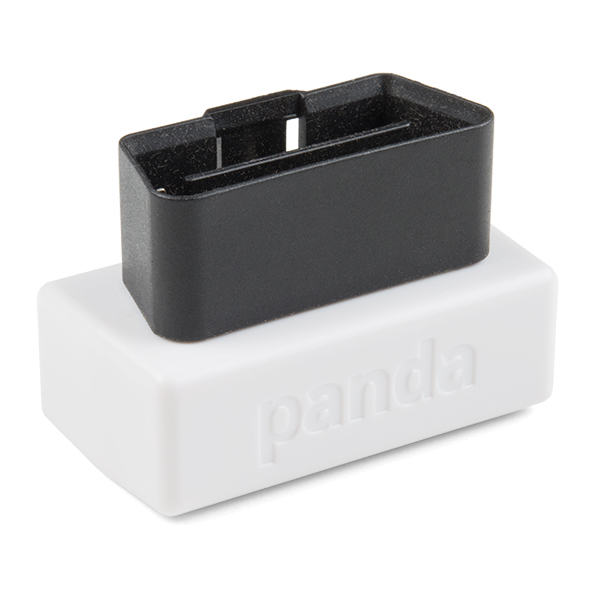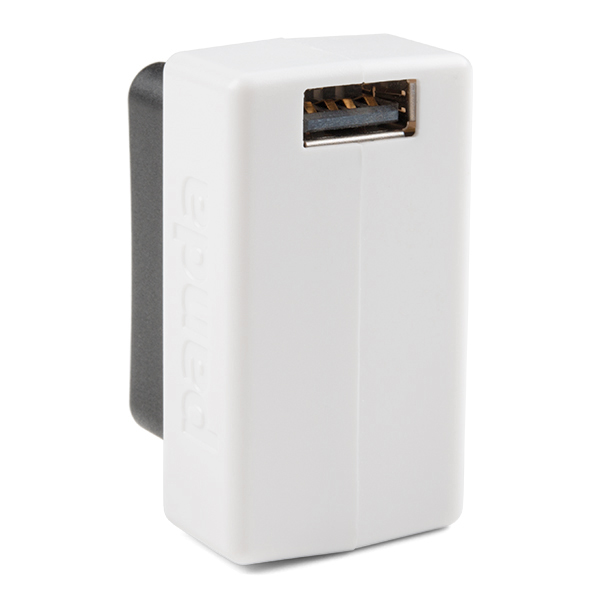comma.ai White Panda OBD-II Interface
The comma.ai White Panda is a universal car interface for your car's OBD-II port. It allows you full access to the many communication buses of your car from a computer or a phone. Using the Panda with Cabana software (link in documents section) is like a Fitbit for your car. Track your RPMs, MPG, cornering G-force, battery life, and so much more. Panda also works as a CAN to USB adapter.
The White Panda supports 3x CAN, 2x LIN, and 1x GMLAN. On the computer side, it is equipped with both USB and Wi-Fi as well as utilizing an STM32F413 for low level communication and an ESP8266 for Wi-Fi. Both are connected over high speed SPI, so the Panda is actually capable of dumping the full contents of the busses over Wi-Fi, unlike other dongles on the market. On top of all of these great features, it can also charge your phone!
This is second generation hardware, reusing code and parts from the NEO interface board.
Important: This is for advanced users only! It is possible to brick your car with this device. Additionally, it's best security practice that you not leave this plugged in to the OBD-II port when not in use.
- 3x CAN
- 2x LIN
- 1x GMLAN
- USB A
- Wi-Fi
comma.ai White Panda OBD-II Interface Product Help and Resources
Core Skill: Programming
If a board needs code or communicates somehow, you're going to need to know how to program or interface with it. The programming skill is all about communication and code.
Skill Level: Experienced - You will require a firm understanding of programming, the programming toolchain, and may have to make decisions on programming software or language. You may need to decipher a proprietary or specialized communication protocol. A logic analyzer might be necessary.
See all skill levels
Core Skill: Electrical Prototyping
If it requires power, you need to know how much, what all the pins do, and how to hook it up. You may need to reference datasheets, schematics, and know the ins and outs of electronics.
Skill Level: Rookie - You may be required to know a bit more about the component, such as orientation, or how to hook it up, in addition to power requirements. You will need to understand polarized components.
See all skill levels
Comments
Looking for answers to technical questions?
We welcome your comments and suggestions below. However, if you are looking for solutions to technical questions please see our Technical Assistance page.
Customer Reviews
3 out of 5
Based on 1 ratings:
OK
Getting help for this thing is tough, even as an advanced user. I had it working as a network interface in Linux, as well as using Cabana to sniff. Then I tried to use it over WiFi, which didn't work out, and then Cabana stopped working.





It looks like the mobile app (chffr) no longer supports this - only allowing the DashCam DevKit to connect.
Do note that it does require a USB-A to USB-A cable or one of their adapters to use with a laptop. It does not appear to work with USB-A to USB-C cables. Looks like most of the documentation on the Wiki is out of date - the page for the Panda has a lot of broken links.
I'll try to update more once I manage to get it set up.
And just saw the announcement - this is now EOL hardware. They hope to continue support for around a year.
https://medium.com/@comma_ai/our-hardware-future-eea980d8c3bd
How does this compare with the ELM 327 chip? Does it offer the ability to communicate with additional modules like ABS?
Most ELM327 dongles are used to do standard error code diagnostics as well as gather small bits of information about the car using different standards and protocols. I believe that most ELM327 dongles only read data from one CAN bus as well. Panda can read up to 3 CAN busses and is used more to read (and through other software, log) data and CAN messages on the car. Panda support for OEM software suites, such as Toyota Techstream and Honda's HDS, has been added to allow individuals to read the same kind of diagnostics info that the standard ELM327 dongles provide.